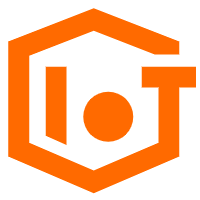eMTC (enhanced machine-type communication) and NB-IoT (narrowband Internet of Things) are two mobile IoT standards. Both the eMTC and NB-IoT mobile IoT network standards have often competed and created confusion over their application scope. In fact, both standards have distinct technical advantages and can work together, so there is no better choice. As a result, the competition is decided by who can reduce their module chip costs faster, who has a higher degree of commercialization, and whose network construction is better.
This issue finally got resolved in June 2017, when the 76th plenary meeting of the 3GPP issued Rel. 15 representing a consensus on the future evolution of mobile IoT technology (including NB-IoT and eMTC). It stated that future systems with a bandwidth under 1.4 MHz would not use eMTC terminals and future systems with a bandwidth over 200 KHz would not use NB-IoT terminals.
This 3GPP resolution promotes the orderly development of M-IoT by clearly delineating the application scopes of eMTC and NB-IoT. Thus, the two standards are no longer in competition but form a hybrid network with differentiated and complementary cooperation. Now, let's compare the two standards over their technical and application aspects.
Technical Features of eMTC and NB-IoT
When comparing peak speeds, NB-IoT only supports data speeds under 200 Kbit/s, while eMTC can reach 1 Mbit/s. Regarding portability, because NB-IoT does not support automatic zone switching, terminals that use this standard are not portable. eMTC provides much better portability.
In terms of voice functionality, NB-IoT does not support voice transmission, while eMTC does. When it comes to terminal costs, NB-IoT's unified module and chip standard has reduced prices to around 5 USD, while eMTC prices are higher and falling more slowly.
Comparing zone capacities, we have seen that eMTC has not advanced in this direction, so it cannot satisfy the needs of high connection volume scenarios. In contrast, NB-IoT offers a coverage radius 30% larger than eMTC. eMTC's coverage is about 9 dB below NB-IoT.
For how to create a hybrid NB-IoT/eMTC networks and the road ahead, please go to Choosing Between eMTC and NB-IoT.
The network is a critical part of every IoT device. This article will help you explore several important features of the IoT network. It will also look at how AliOS Things aims to provide some new and innovative solutions to problems.
In the Internet of Things, TCP’s problem becomes even more prominent because the Internet of Things environment often faces poor network signals, limited bandwidth, and harsh power consumption limitations. NB-IoT, as seen recently, is a prime example. Most of NB-IoT's terminal devices work in a battery powered environment; their transmission rate is low, and their application scenarios are wildly varied. TCP is connection-oriented, the timeout retransmission mechanism consumes more memory, and also affects power consumption.
In the Internet of Things field, LPWA (Low Power Wide Area) technologies NB-IoT, LoRa and SigFox are attracting much attention. Their low power consumption and wide coverage simplify deployment in a variety of complex environments. Based on the 802.15.4 WSN (Wireless Sensor Network) technology Zigbee, Wi-Sun’s power and cost advantages are obvious, suitable for large-scale deployment.
In the face of the immense opportunities and challenges that IoT brings to the market, carriers urgently need to build core competitiveness by executing strategic transformations to adopt valuable platforms and application service layers in the Internet of Things (IoT) market.
In this article, we will look at four simple but important ways for carriers to improve their enterprise IoT services.
LTE-based networks and hybrid NB-IoT/eMTC networks can meet the requirements of IoT communication scenarios regarding wide coverage, low power consumption, low costs, and a certain degree of portability. Additionally, through sustained network construction and optimization, carriers can provide the flexible network communication support most suitable to the needs of IoT industry customers and move toward 5G. This will allow them to comprehensively cover the needs of narrowband massive-volume applications, high bandwidth applications, critical applications, and other IoT scenarios.
IoT Platform is a device management platform on Alibaba Cloud that enables developers of IoT applications to implement two-way communications between end devices (such as sensors, final control elements, embedded devices, and smart household electrical appliances) and the cloud by creating data channels.
IoT platform provides device SDKs to help you connect devices to Alibaba Cloud.
Alibaba Cloud offers intelligent IoT cloud solutions which integrate with your smart hardware devices and provide real-time data to establish an instant exchange of information between the hardware and web application. This provides essential data about users, which can be processed in real-time for insightful business decisions.
Alibaba Cloud offers robust automobile monitoring and management solutions for vehicle manufacturers and goods owners to make vehicular monitoring easier, more efficient and accurate. Get real value for your business using various algorithms, analytical models and multi-type data convergence embedded in automotive network solutions.
The vehicle network architecture consists of four stages: IoT, service, big data zone and business intelligence.
Alibaba Cloud IoT Platform allows IoT companies stable communication between devices and the IoT Platform. Featuring nodes deployed globally, devices around the world can communicate with the IoT platform rapidly and with low latency. Alibaba Cloud IoT Platform also provides various security measures that guarantee individual device security as well as secure communication between devices and the IoT platform.
Set Up Centralized Linux Authentication with FreeIPA on Alibaba Cloud

2,593 posts | 790 followers
FollowAlibaba Clouder - July 17, 2018
Alibaba Clouder - September 24, 2019
Alibaba Clouder - June 20, 2018
Alibaba Clouder - September 17, 2019
Alibaba Clouder - September 16, 2019
Alibaba Clouder - May 24, 2018

2,593 posts | 790 followers
Follow IoT Platform
IoT Platform
Provides secure and reliable communication between devices and the IoT Platform which allows you to manage a large number of devices on a single IoT Platform.
Learn MoreMore Posts by Alibaba Clouder